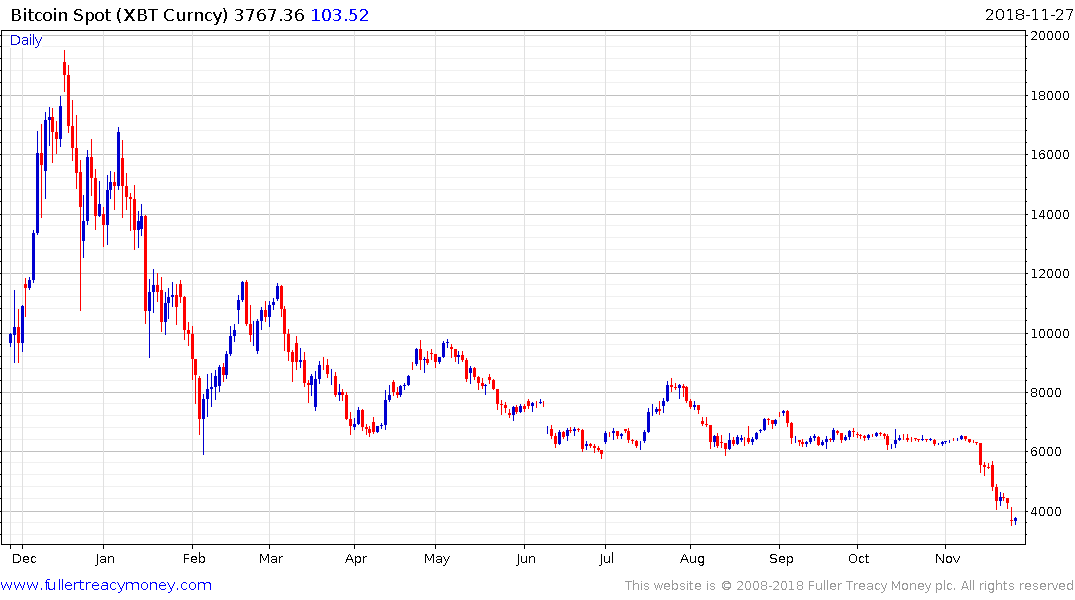Money in a digital age: 10 thoughts
Thanks to a subscriber for this interesting transcript of a speech delivered by Agustin Carstens from the Bank of International Settlements. Here is a section:
Another problem is that even those transactions that have seemingly entered the ledger can be retroactively voided. In technical terms, cryptocurrencies such as bitcoin cannot guarantee the finality of individual payments. Although a user can verify that her transaction has been included in the ledger, unbeknownst to her an adversary trying to double-spend coins can create rival versions of that ledger. Since which one of the two ultimately survives is uncertain, the finality of payments is never assured. And because mining, contrary to the decentralised idea, has become an oligopolistic industry, this is a likely threat.
Transaction rollbacks can also occur due to so-called “forking”, when cryptocurrencies split into subnetworks of users, as has happened several thousand times in the course of the last 12 months (Graph 4). Again, this means that finality will forever remain uncertain.
2. Cryptocurrencies are unstable, including so-called “stable coins”
Remember that money is supposed to act as a unit of account, a means of payment and a store of value. I have just explained how cryptocurrencies fall short of the first two of those goals, and they are just as weak regarding the third.Generating any confidence in a cryptocurrency’s value requires that its supply is predetermined by a protocol. Otherwise, it would be supplied elastically and debase quickly. Therefore, any fluctuation in demand translates into changes in valuation. The valuations of cryptocurrencies are subject to extreme volatility, as shown in Graph 5. This inherent instability is unlikely to be fully overcome by better protocols or financial engineering, as exemplified by many failed so-called “stable coins” – including, most recently, Tether, which saw a marked loss of confidence and substantial deviations from its targeted one-to-one peg to the US dollar.
This outcome is not coincidental. Keeping the supply of the means of payment in line with transaction demand requires a central authority, typically the central bank, which can expand or contract its balance sheet. The authority needs to be willing at times to trade against the market, even if this means taking risk on its balance sheet and absorbing a loss. In a decentralised network of cryptocurrency users, there is no central agent with either the obligation or the incentive to stabilise the value: whenever demand for the cryptocurrency decreases, so does its price.
The scaling issues with bitcoin are well known and represent the foundation of the many hard forks which have taken place. The simple fact is that the first cryptocurrency, bitcoin, is unwieldy and was never truly designed to an alternative to the global monetary system. That is a major argument for why bitcoin will not survive over the long term as the preeminent vehicle for speculation on the blockchain sector. I have been comparing Bitcoin to Netscape for the last year and I continue to think that is the most appropriate historical comparison.

The pace of innovation on in the blockchain sector continue to accelerate with the directed acyclic graph (DAC) cryptos addressing many of the challenges discussed in this paper. For example, IOTA’s tangle becomes more efficient the more people use. Nevertheless, because of Bitcoin’s size these alt-coins are still high beta plays on the sector. It is only when they start generating alpha that we will have evidence of true divergence.


